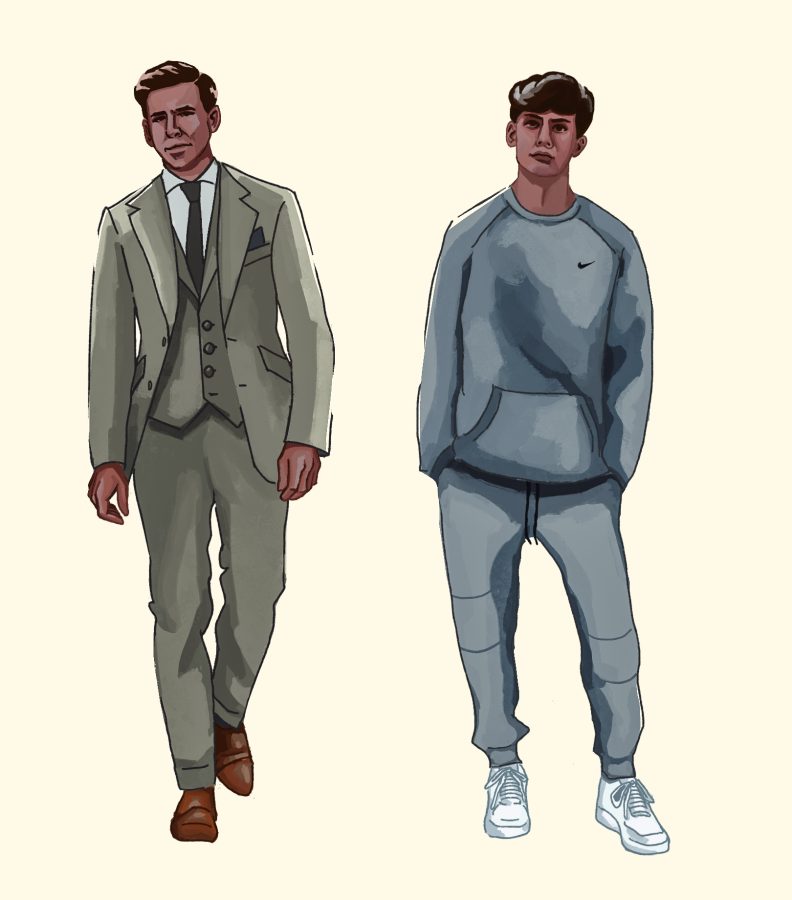Today, it is still rare for men to be fashion-conscious. So, why is it that when a man shows interest in fashion it creates a major stir? Certain periods of time have enhanced fashion, and the 18th century was full with days that allowed more people to learn about fashion. The study of fashion evolution is crucial for anybody interested in the development of patterns and outfits for various phases of life across time. Clothing is both a requirement and a function. Before we get into how men’s fashion has changed through time, I thought it would be helpful to review men’s fashion from the 1970s, since this was the foundation for where we are now in terms of styles, trends and patterns for men’s apparel.
The 1960s are considered by modern fashion experts to be the turning point in men’s fashion since it is when the patterns we see now were first introduced (1). Shirts with floral motifs, “slim” pants and even huge lapels were among the things launched in the 1970s. Not only were clothing patterns altering, but vivid colors were also becoming more prevalent in men’s apparel. As prominent influencers such as the Beatles began to indulge in this new fashion trend, the colorful clothing style became immensely popular and swiftly embraced.
This prominent time in fashion leads us to where we are now in terms of what is considered fashionable, and with so many different types of clothes available, there’s no reason why everyone shouldn’t be able to discover the right style that suits their personality. Men’s fashion, on the other hand, has evolved dramatically throughout time, and clothing and fashion brands are now presenting more and more original styles, colors and concepts than ever before.
Because some of the world’s major men’s fashion and clothing firms have partnered with celebrities like Kanye West, Pharrell Williams and Harry Styles, the clothing industry has surely enhanced the assortment of fashion choices provided to individuals. As Lydia Edwards for The Conversation said:
“More famous men are wearing dresses: from actor Billy Porter on the red carpet to singer-songwriter Harry Styles on the cover of Vogue. They have prompted much commentary, both positive and negative, leading fashion commentators to ask if frocks might become a regular part of men’s sartorial landscape” (2).
Fashion’s primary goal is to encourage individualism, which to some would make it gender neutral. Celebrities have begun to defy gender stereotypes in terms of fashion, and in such a public eye, these figures may inspire their fans and even common onlookers to do the same.
Rather than classifying fashion into men’s clothes and women’s clothes, we should approach it as a piece of clothing. Rather than launching a separate men’s and women’s collection, major brands could market themselves by creating gender neutral clothing. Clothes are only pieces of fabric until they are worn by people, so there isn’t much of a point in labeling and categorizing them.
Not only clothes, but also makeup and nail polish have been stereotyped as a feminine product. This is possibly why celebrities like Machine Gun Kelly unveiled UN/DN LAQR, his new gender neutral nail polish brand that was inspired by freedom of expression and innovation. Fashion includes nail polish! Nail polish can be used by guys. Not only MGK, but Harry Styles has also started his own nail polish and skin care line called Pleasing.
We need to cease categorizing things based on stereotypes and gender. Gender neutral clothing is no exception to the norm of conformity that fashion has always been used to disrupt. It opposes the notion that specific outfits are made for women or males, as well as the existence of such a dichotomy. Gender neutral attire is suitable for everyone.
Today’s fashion at UMass Boston has not been subject to gender stereotyping. Students are allowed to express themselves and at their comfort level. There aren’t any norms that one should follow. Anyone can wear whatever they choose, including skirts, nail polish, shirts and suits. With Gen Z accounting for a large portion of the consumer market, we can see that gender identity is an important aspect for them. You can desire to be free of the constraints and detrimental effects of gender identities that are normally reflected in modern society’s dress choices. It’s all about expressing yourself at UMass Boston.
-
https://www.rebelsmarket.com/blog/posts/what-was-men-s-fashion-like-in-the-1960s

